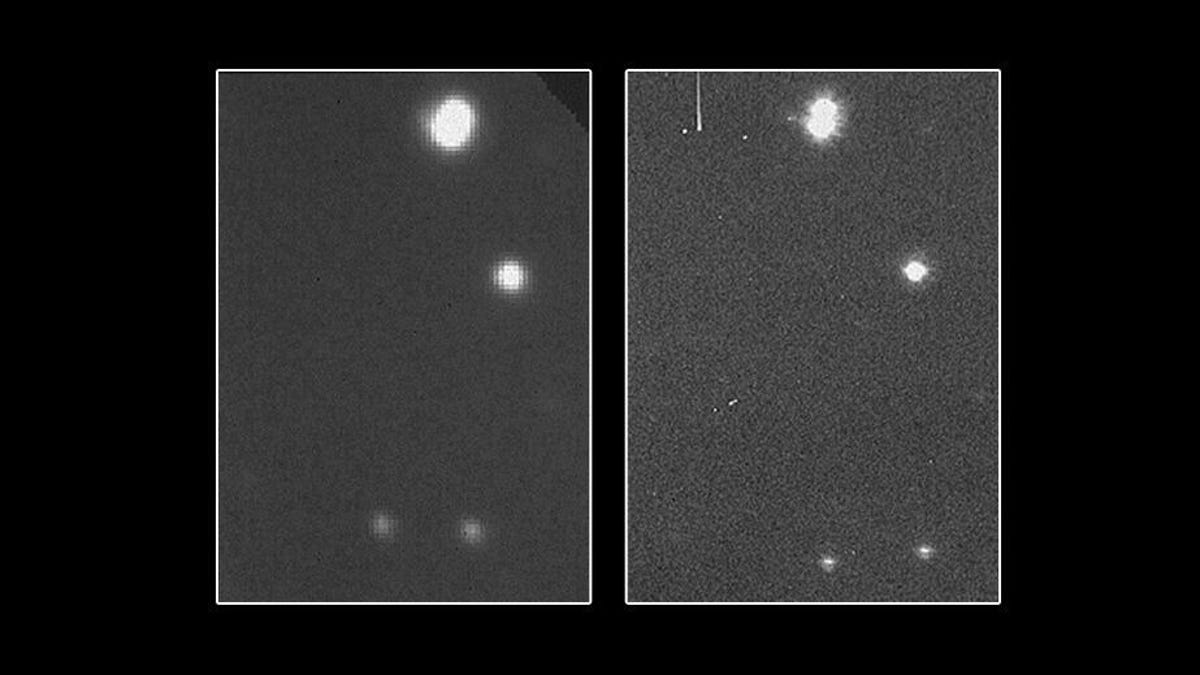Look Back at Hubble Space Telescope's 'First Light' Image From 1990
In celebration of Webb's first major image release, here's Hubble's starry-eyed view from decades ago.
That sense of energy crackling across the internet this week is for the arrival of the James Webb Space Telescope's first science images on Monday and Tuesday. Webb is the shiny new thing, but let's not forget the still-operating Hubble Space Telescope. This is the perfect time to gaze back at its "first light" image from 1990.
Hubble has been observing the cosmos for over three decades. The first-light view was a wow moment at the time because it showed the kind of clarity the new observatory could achieve compared to ground-based telescopes. NASA and the European Space Agency shared Hubble's image of stars along with the same section of sky as seen by the Las Campanas Observatory in Chile.
A notable spot in Hubble's version is the double star near the top. In the Chilean telescope's shot, it's a big blur. In Hubble's, it's clearly two stars. Ground-based telescopes have to contend with the "smearing effect of Earth's atmosphere." Telescopes in space are able to avoid this problem.
Hubble's shot came from its Wide Field/Planetary Camera during a preparation phase prior to its serious science observations. "The first image taken with Hubble was intended to assist in focusing the telescope," said NASA in a look back at Hubble's history. It can be compared to a Webb test image released last week. We've come a long way in 30 years.
Shortly after the first-light image came out, NASA announced there was an imperfection in Hubble's primary mirror, which made images blurry. The telescope was able to overcome that rough start thanks to a servicing mission in which spacewalking astronauts installed corrective equipment in 1993.
A space shuttle mission in 1993 fixed Hubble's eyes. Spiral galaxy M100 is seen in before (left) and after (right) images.
Webb is set to rock the astronomy world with unprecedented new views as it peers into the deep history of the universe. While Hubble has had it share of troubles over the years, it's still turning out wondrous images and data, and NASA hopes it will continue to operate even as Webb shakes up what we know about space.
Here's how to watch the unveiling of Webb's momentous first views of the cosmos.


